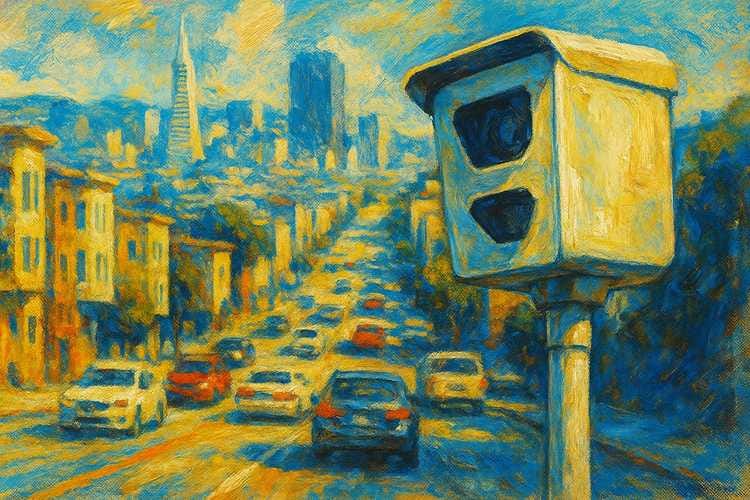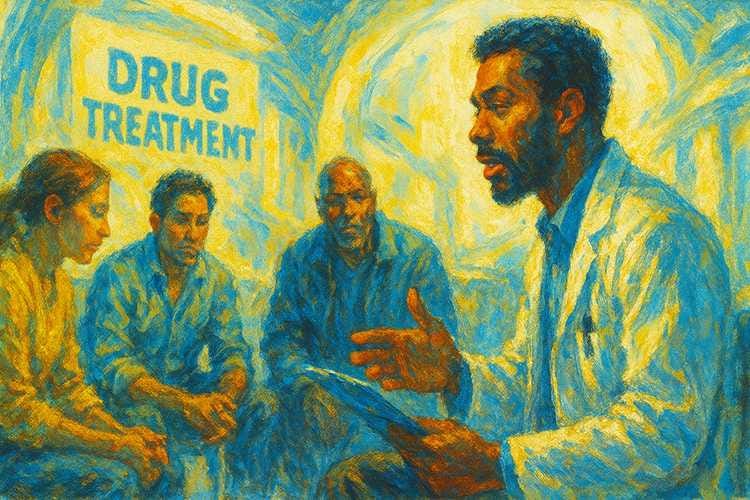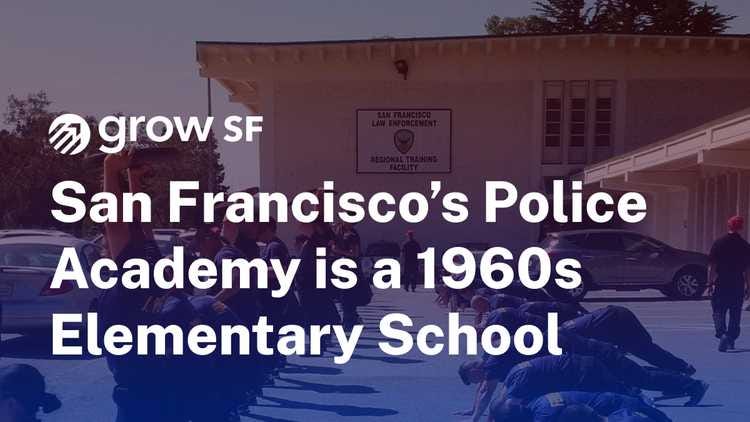SFPD launches safety ambassador pilot in Fillmore and Hayes Valley
PLUS: Slow Down! Speed Cameras Move From Warnings to Fines
Here’s what happened around the city for the week of August 3, 2025:
- SFPD launches safety ambassador pilot in Fillmore and Hayes Valley
- Slow Down: Speed Cameras Move From Warnings to Fines
- New math curriculum approved by SFUSD, where just 45% are at grade level
- Prop F progress: Drug treatment referrals show early results
Recent & upcoming openings:
- Happy Crane opens to happy crowds
- Anomaly’s summer menu
Research:
- San Francisco’s Police Academy is a 1960s Elementary School – It’s Time That Change
SFPD launches safety ambassador pilot in Fillmore and Hayes Valley
Published August 8, 2025
The Facts
San Francisco is testing a new police-ambassador program in the Western Addition and Hayes Valley, sending retired officers to serve as the “eyes and ears” for merchants worried about safety, according to Natalia Gurevich at The Examiner. The initiative is in response to small business owners who have suffered harassment, vandalism, and crime for years, most recently highlighted by the vandalism of Minnie Bell’s Soul Movement restaurant.
The pilot program places two retired officers in each neighborhood to patrol, observe, and report incidents via police radio. Ambassadors are unarmed and cannot make arrests but can quickly connect with nearby SFPD units. The initiative was launched through collaboration between District 5 Supervisor Bilal Mahmood, Mayor Daniel Lurie, and the SFPD.
Officials say the program is funded from SFPD’s budget and will run on a trial basis while they determine optimal schedules. Similar ambassador efforts already operate in Chinatown and the Castro.
The Context
Western Addition merchants have voiced growing frustration over safety conditions, particularly after the Fillmore Safeway closed. Meanwhile Hayes Valley residents and merchants have experienced rising crime due to the crackdown in the Tenderloin pushing criminal activity into other neighborhoods.
The ambassadors are meant to reduce the workload on patrol officers while providing a visible deterrent. If the pilot proves effective, it could be expanded or made permanent.
The GrowSF Take
Eyes on the street means less crime on the street. This pilot program is a smart, quick-response solution to support small businesses without pulling patrol officers off other calls. While it’s no substitute for a fully staffed police department, visible safety ambassadors can help restore confidence for merchants and customers alike. If it works here, it should be scaled to other commercial corridors dealing with similar challenges. San Francisco’s recovery depends on making every neighborhood feel safe to shop, dine, and do business.
Slow Down: Speed Cameras Move From Warnings to Fines
Published August 8, 2025
The Facts
Slow down! SF's automated speed cameras have started issuing real tickets for speeding. And we know there are a lot of speeders out there — the cameras captured over 350,000 violations since March. The fines start at $50 for speeds 11–15 mph over the limit, and can go up to $500.
The data shows strong early behavioral shifts: three-quarters of warned drivers didn’t get ticketed again, and average speeding occurrences dropped notably over time, according to Danielle Echeverria and Rachel Swan at The Chronicle.
The Context
Traffic enforcement dropped to nearly zero during the COVID pandemic and has only barely started to tick back up. Many say the traffic police have been on defacto strike, and others blame SFPD's top brass for not prioritizing traffic enforcement.
The city has been trying to get more speed cameras installed for years, but the process has been slow and mired in bureaucracy. This program required a change in state law and a lengthy negotiation with the ACLU to develop a program they would not sue to stop. Ultimately, the law was limited to a short 5-year pilot program. The ACLU still opposed the bill in the end.
The GrowSF Take
Breaking the law, including speeding, should have swift and certain consequences. Catching 350,000 speeders since March shows how effective these cameras can be, and just how much speeding has been going on in San Francisco. The 30% reduction in speeding during the warning period is a promising sign that these cameras are changing behavior, not just generating revenue.
New math curriculum approved by SFUSD, where just 45% are at grade level
Published August 8, 2025
The Facts
The San Francisco Unified School District (SFUSD) is rolling out a new math curriculum next year, with the hope of improving student performance. Jill Tucker at the Chronicle reports that "the new curriculum, which cost $8 million, includes classroom math toys and digital practice problems with moving parts and instant feedback."
The new math curriculum was trialed last year and resulted in those students scoring higher on standardized tests (though SFUSD's press release did not specify how much higher). The stated goal is to raise 8th grade math proficiency from 42% to 65% by 2027.
The Context
Currently, only 45% of its 48,000 students meet grade-level expectations (just 11% of Black students and 17% of Latino students are at grade level in math. Despite those low numbers, it's actually doing better than the state average, where only 36% of students are at grade level in math. But that's really more of a condemnation of the state of education in California than a celebration of SFUSD's performance.
The new curriculum comes after years of criticism regarding the district's previous math program, which was deemed ineffective by many educators and parents.
The GrowSF Take
We're glad SFUSD is trying something new to improve math education. The current state of math proficiency in the district is unacceptable, and we hope this new curriculum will lead to better outcomes for all students. But we wish this announcement had come with more details about the trial results and how the district plans to measure success moving forward.
Prop F progress: Drug treatment referrals show early results
Published August 8, 2025
The Facts
About 100 people have entered drug treatment in the past six months due to the passage of Proposition F in March 2024 (GrowSF supported Prop F). Maggie Angst at the Chronicle reports that more than 300 were referred to treatment (meaning they were suspected of being addicted to drugs), 154 people were given a treatment plan, and 101 people engaged in some form of treatment. Just 21 people have refused to engage and lost their cash benefits.
The Context
About two people die from drug overdose every day in San Francisco, predominantly among homeless people. Prop F was designed to get people into treatment by requiring those receiving cash benefits to engage in drug treatment or else lose their benefits.
Prop F marked a shift from harm-reduction toward mandated intervention in the city’s drug crisis. It was written well, and properly balanced treatment mandates with support services. As we wrote in our endorsement of Prop F:
Individual adults who are suspected of being dependent on illegal drugs will be required to undergo a professional evaluation for substance abuse by the Department of Public Health. If they are found to have a substance abuse issue, they will be required to participate in a treatment program in order to obtain the cash assistance. If they fail to comply with the treatment program (provided at no-cost to them), their cash assistance will be suspended for 30 days. However, their housing assistance will continue, and may be extended for longer if necessary to prevent eviction and homelessness.
Individuals will not lose their benefits if they are not 100% sober; they only need to participate in the treatment program.
The GrowSF Take
We're glad to see Prop F has helped get some people into treatment, but we're disappointed that the numbers are so low and so many people continue to die from drug overdoses.
We hope to see these numbers continue to grow as the program matures. The early results are promising, and we hope that more people will be referred to treatment and that more will successfully engage in it. Losing two people every day to drug overdoses is unacceptable.
Recent & upcoming openings
A great city is constantly changing and growing, let’s celebrate what’s new!
Happy Crane opens to happy crowds
The star of this summer’s openings has arrived. The Happy Crane, headed by chef James Yeun Leong Parry, has taken over the old Monsieur Benjamin space in Hayes Valley. He will bring his experience from kitchens in Hong Kong, Tokyo, and at Benu to guests, cooking up Cantonese and Chinese flavors. The restaurant immediately booked up for all of August, so you’ll need to wait until September to make a reservation!
Anomaly’s summer menu
If you’re looking for fine dining you can eat today rather than next month, check out Anomaly. It’s a favorite of mine and they just launched their summer menu featuring beef tartare, hokkaido scallops, and Wolfe Ranch quail. Make a reservation and go ahead, get the wine pairing.
Research
San Francisco’s Police Academy is a 1960s Elementary School – It’s Time That Change
Published August 4, 2025
The academy’s roots
The San Francisco Police Academy sits at 350 Amber Drive in the Diamond Heights neighbourhood. It is not a purpose‑built police facility. It is a former elementary school. According to the Glen Park Neighbourhoods History Project, Diamond Heights Elementary School opened in 1965 on Amber Drive as part of a planned modern housing development. The building’s problems were apparent early on. The elementary school closed after a few years because the structure was built on a hillside and was quickly found to be sliding into the canyon. When the elementary school shut down, the police department took over the building and has used it for training ever since.
The city’s Community Facilities element, prepared for its general plan, describes San Francisco’s police facilities as “functionally obsolete and deteriorated,” with only a few meeting contemporary standards. In short, the academy is housed in a 1960s‑era elementary school that was never designed for law‑enforcement training and has long been considered seismically unsafe.
How the facility is used today
Classes still take place in old elementary‑school classrooms. There is no dedicated gym or large indoor training space, cadets exercise on the parking‑lot pavement between parked cars, and instructors adapt classrooms for physical training. When GrowSF interviewed officers and recruiters, they described candidates taking tests while sitting on the floor because there are not enough desks. These conditions make it harder to recruit and retain quality cadets. They also undermine our ability to deliver modern training – from defensive tactics and scenario‑based drills to de‑escalation and community‑policing techniques – in an environment that keeps trainees safe.
The building’s age and seismic condition raise safety concerns. The former elementary school was declared unsafe for school children in the 1960s, yet it now hosts hundreds of aspiring police officers each year. On top of that, the city’s planning department acknowledges that many police facilities are outdated and do not meet modern standards. Training our officers in an old, seismically deficient schoolhouse sends the wrong message about the importance of policing in San Francisco.
What a modern police academy looks like
Other major cities have invested in modern training campuses. New York City opened a 32‑acre police‑academy campus in College Point, Queens in 2014. The official description from the NYC government notes that the campus contains about 750,000 square feet of usable space, including state‑of‑the‑art classrooms, a gymnasium, an indoor track and a “tactical village” with mock environments such as a precinct station, multi‑family residence, grocery store, restaurant, park, court room, bank and subway car. The New York Times notes that the project cost $950 million and features a physical and tactical‑training building with a gymnasium and swimming pool. In other words, New York treats police training as a public‑safety priority and invests accordingly.
NYPD Academy (2025)
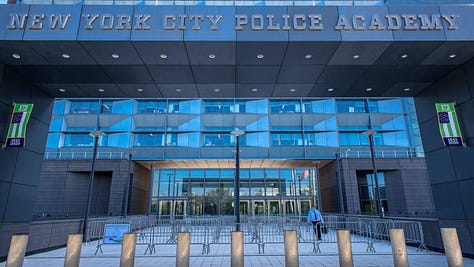
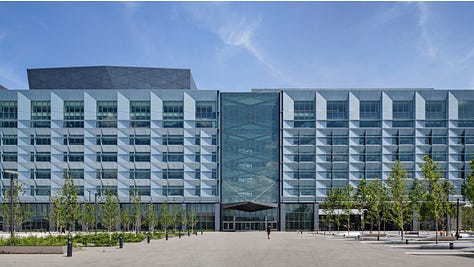
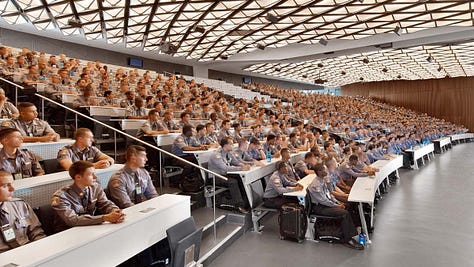
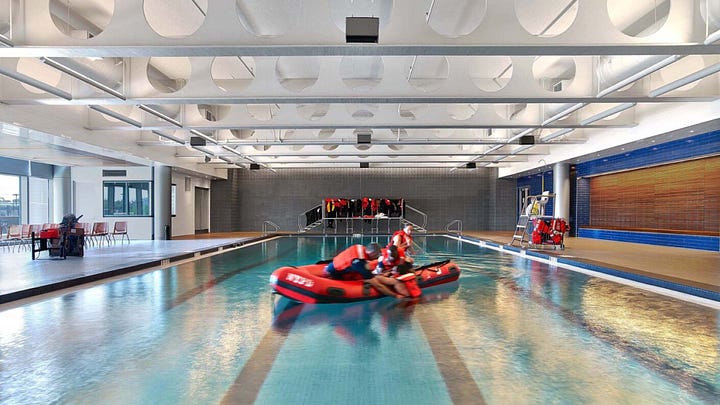
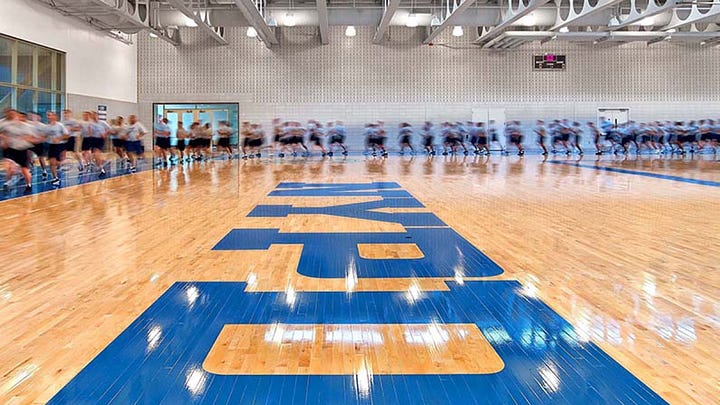
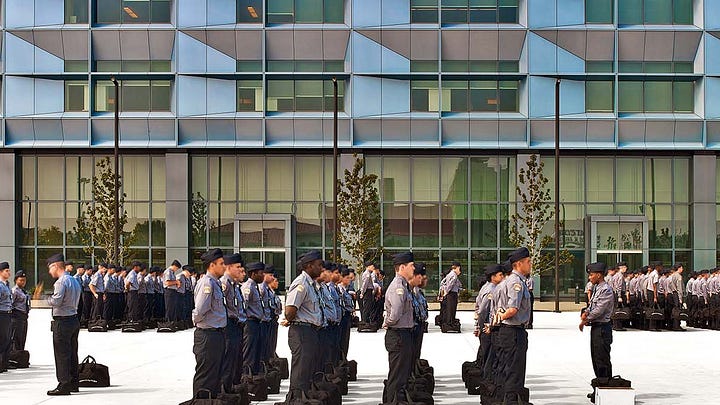
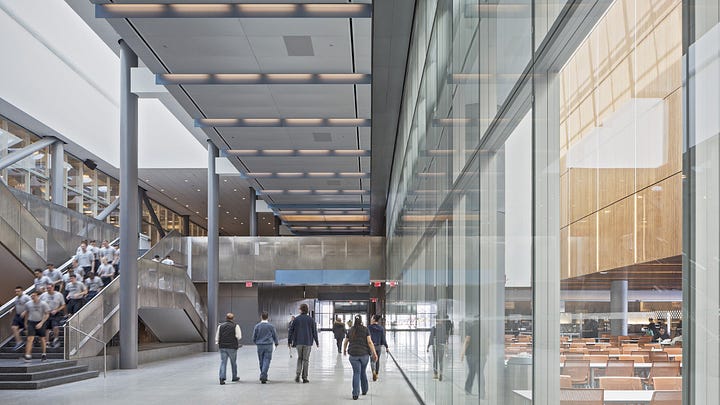
SFPD Academy (2025)

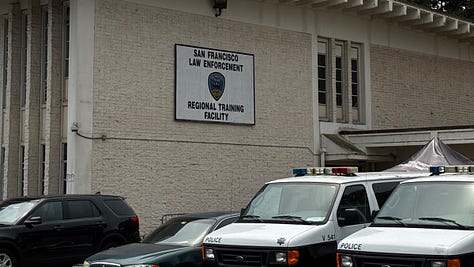
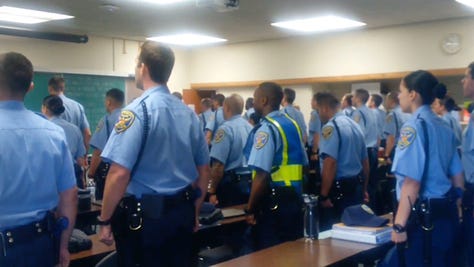
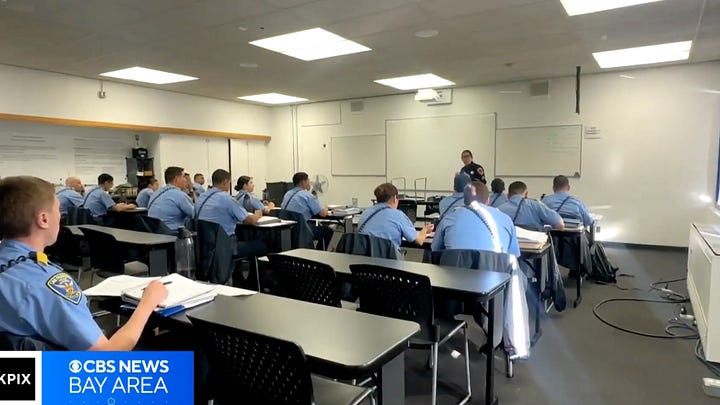
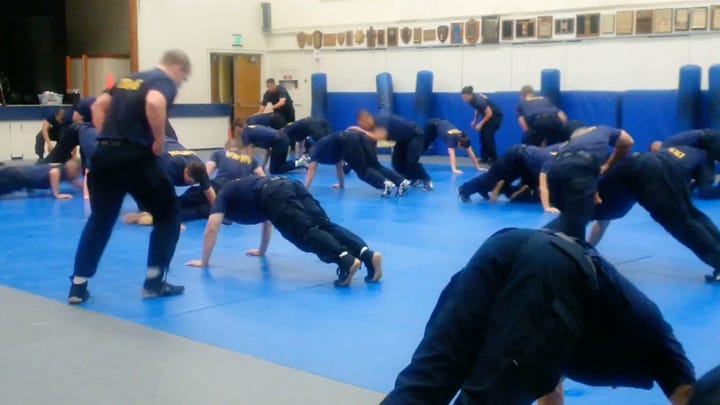
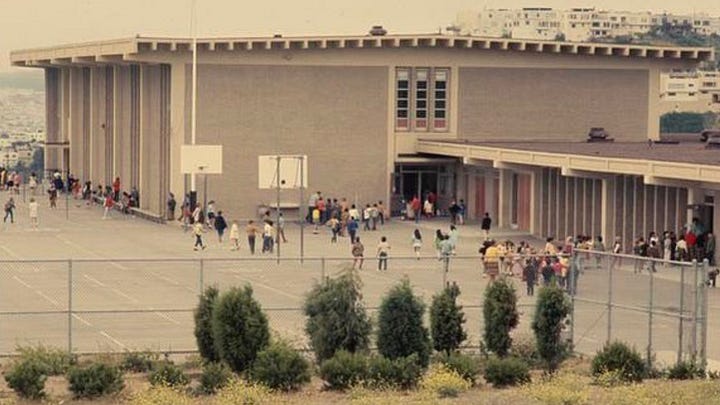
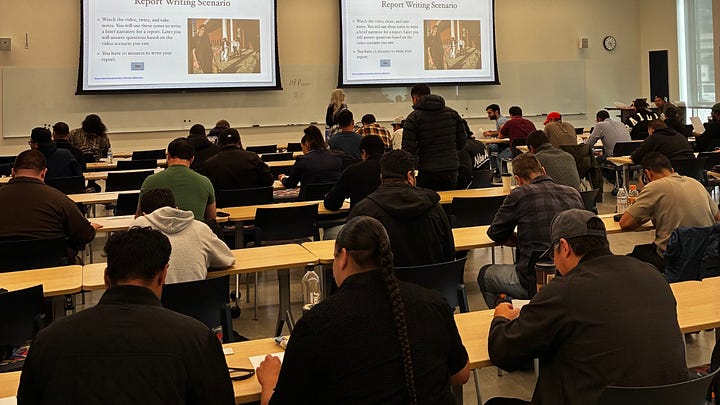
San Francisco’s fire department is also moving ahead. A Public Works report on the San Francisco Fire Department’s Division of Training shows that the city is consolidating its fire‑training operations on an eight‑acre site at 1236 Carroll Avenue in the Bayview. The new campus will include live‑fire and simulation training structures, classrooms and EMS training facilities. The report explains that the new facility is designed to “improve operational efficiency” and meet the training needs of firefighters and EMTs. That investment is sensible and necessary – and it highlights the neglect of the police academy.
The city’s current 10 year capital plan includes no timeline, no plans, and no funding for a new police academy, even though officers and training staff have been calling for a new police academy for over a decade.
Why San Francisco needs a new academy
San Francisco aspires to have a modern, fully staffed police force that uses best‑in‑class training to reduce crime and build trust. Achieving this goal requires a modern training facility. Our current academy is an outdated elementary school built more than 60 years ago and long considered seismically unsafe. The building’s limitations – cramped classrooms, no proper gym, parking‑lot workouts – hinder recruitment and undermine morale. If we expect officers to perform at a high level, we must give them an environment designed for modern policing.
A new academy would allow cadets to train with the equipment and scenarios they will encounter on the job: mock apartments and businesses for de‑escalation training, indoor firing ranges with modern ventilation, gyms and obstacle courses for physical conditioning, and high‑tech classrooms for legal and community‑policing instruction. A purpose‑built facility could also house continuing‑education programs for veteran officers, helping them adapt to evolving laws and techniques. Funding such a project would require political will and careful budgeting, but the payoff – better‑trained officers and improved public safety – is worth it.
Looking Forward
San Francisco once pioneered progressive policing, but its police academy has become an embarrassment. Training hundreds of new officers each year in a former elementary school that is seismically unsafe and woefully outdated undercuts our commitment to public safety. New York City and our own fire department are investing in world‑class training campuses, San Francisco should do the same for its police department. To build a modern, fully staffed police department, we need a modern, well‑equipped police academy. Without it, we will struggle to recruit and train the officers who keep our city safe.
San Franciscans want a fully-staffed, modern police force. We need the facilities to make that possible.



